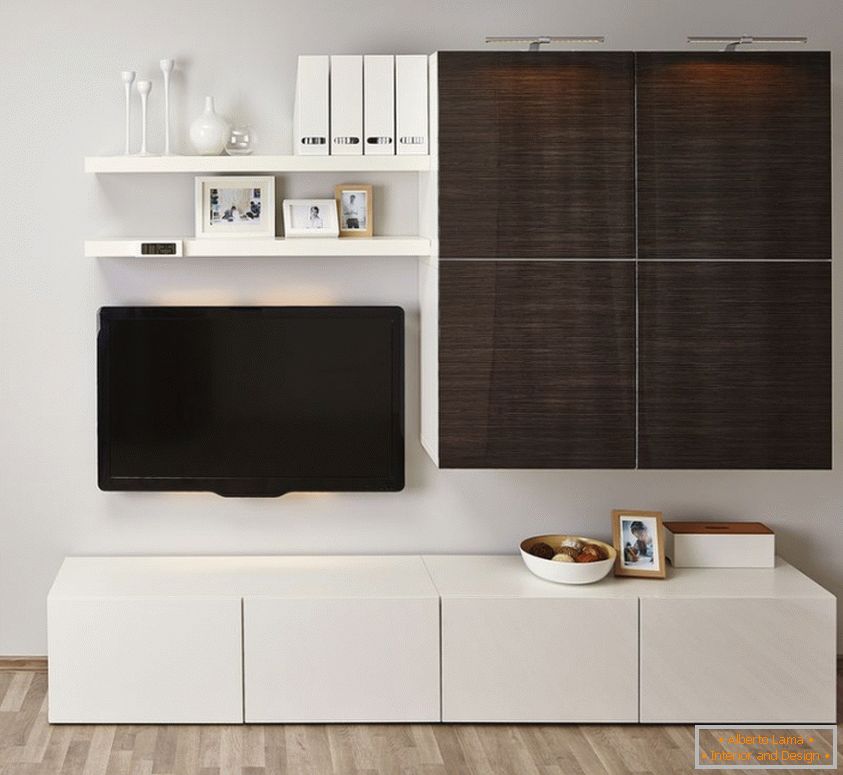
Registration of an apartment, a private house, a working office, with the help of knotted weaving, will create an extraordinary comfort in the room. In this technique, any rooms are made out, many household items are created, and some versions of macrame in the interior can make even a child.
Over time, macrame became decorative art - it began to be used as decoration of clothes, home draperies, weave amulets, hats, bags and stuff. Each people did it differently - silk, woolen, cotton threads, hemp ropes, gold gimp, etc. were used. Macrame was known in many countries of the world - Japan, China, Turkey, India, and then in Russia. Later, everywhere there were circles, teaching this art, master classes in glossy magazines, the Internet.
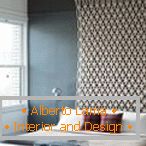
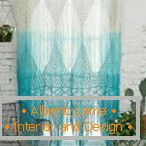

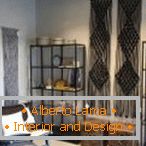

In which styles do you use nodish decor?
A variety of products in the technique of macrame can decorate the interior of almost any style:
- classical - a colored or plain, wall or floor mat with brushes, fringe, combined with a woven coverlet, is suitable;
- minimalism - delicate wicker elements on the windows diversify the modest decoration of the room;
- country - long curtains of linen, cotton threads, on windows, doorways, will be an excellent addition;
- loft - gross abstractions of thick twine on stone walls, "dream catchers" under the chandeliers look very original;
- Art Deco - "in the theme" will come chic lampshades with a lot of voluminous details, beads, stones, floor lamps, ceiling lamps;
- ecological - hanging chairs, wicker from jute, numerous pots with potted plants on windows, walls will create a unique design.

Too much wicker decor in one room is not desirable - preferably two or three elements that fit together.
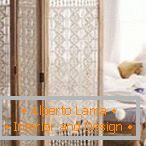

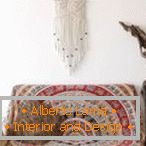


Preparatory work - what you need to know about technology
To get started, you need:
- thread, long cord;
- tape measure;
- pins, "invisible";
- wide roller or cushion;
- scissors.
In most macrame patterns, the threads are divided into basic and working threads - the latter are made four to eight times longer than the intended product, and the first - a little more than its width. Working threads are attached to the main ones.
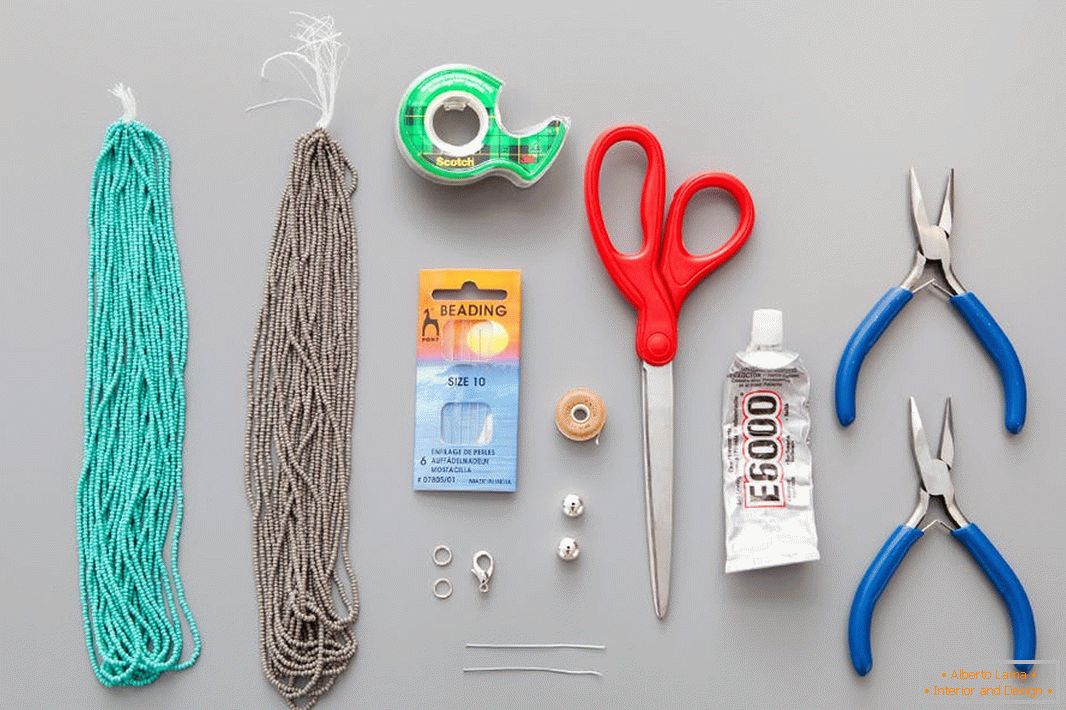
Threads - how, what to choose
Macrame can be weaved from a wide variety of materials, both natural and synthetic:
- hemp;
- flax;
- jute;
- cotton;
- sisal;
- soutache;
- polypropylene twine;
- cord line, etc.
Many masters use linen ropes, wire, ribbons, shoe laces, waxed thread, "Muline" threads, flat braid, paper twine.
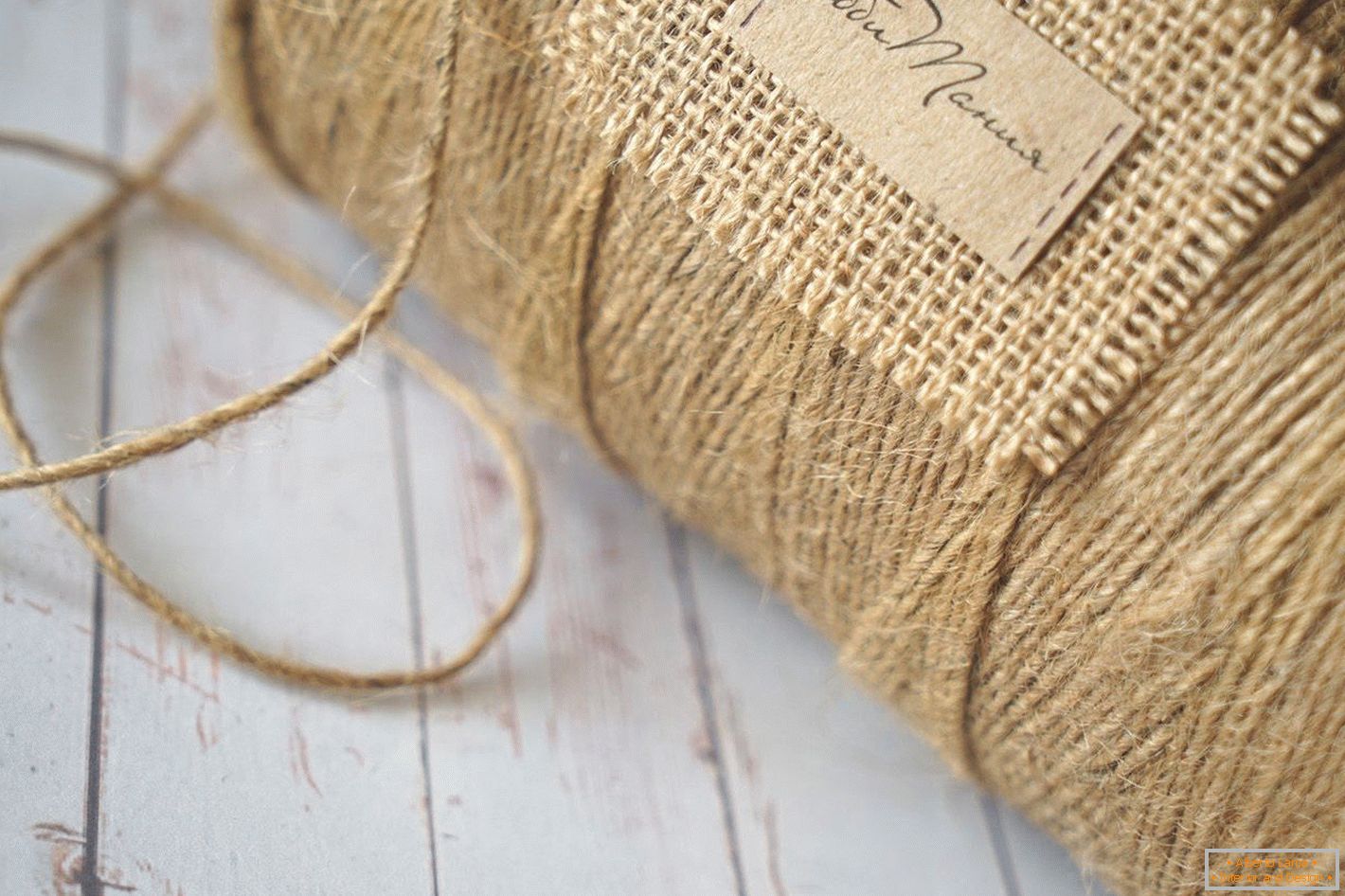
Too fluffy materials should not be used - the pattern of them will be poorly discernible.

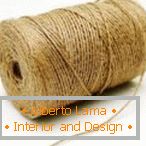
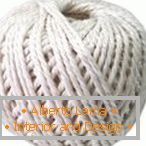
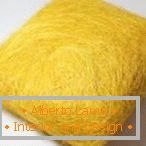

Ways of fastening
Threads are bent in half, by tossing a loop, threading ends into it, fastened on a base that is fastened with pins to the platen. The loop can be thrown back, behind the warp thread, and forward, pulling from under it - two different knots will be obtained.
In the third variant, first one of the previous nodes is tied, then each of the threads is thrown over the base, bends around it, passes through the loop, symmetrically, the other.
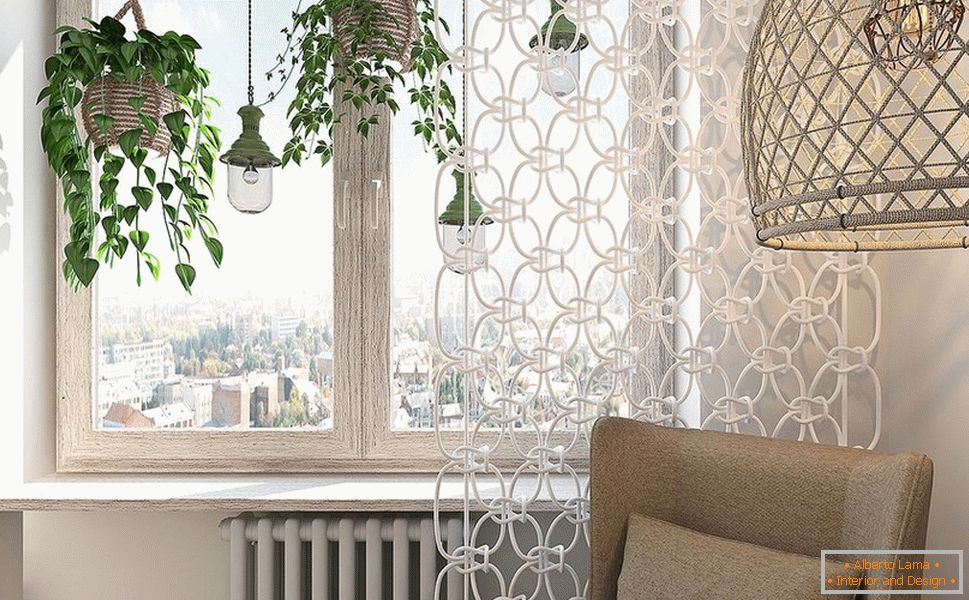
The fourth variant: the thread is put by the top end under a basis, it is pinned, the second end is thrown on a basis, forming a turn on the right. The second turn is made to the left of the top. At the lower end of the thread, round the base, pass into the loop from below, tighten.
Alternatively, the threads are fixed on a wooden base, which is fixed on a table, a wall using two hooks with suckers.


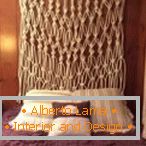

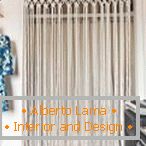
All about nodes
During its history, mankind has created a huge number of nodes, but not all of them are used in modern macrame. Conditionally they are divided into basic, decorative, auxiliary.
Basic:
- right and left simple nodes;
- "eight";
- tie (Slovak);
- left and right;
- Armenian (sliding);
- repous;
- Hercules (straight);
- single flat (screw-like);
- double flat (square);
- triple flat (gourmet);
- Chinese;
- "cross";
- "flower";
- "Button" (double, flat, sliding);
- Ceiling (well);
- "Snake";
- "mystical";
- "lotus".
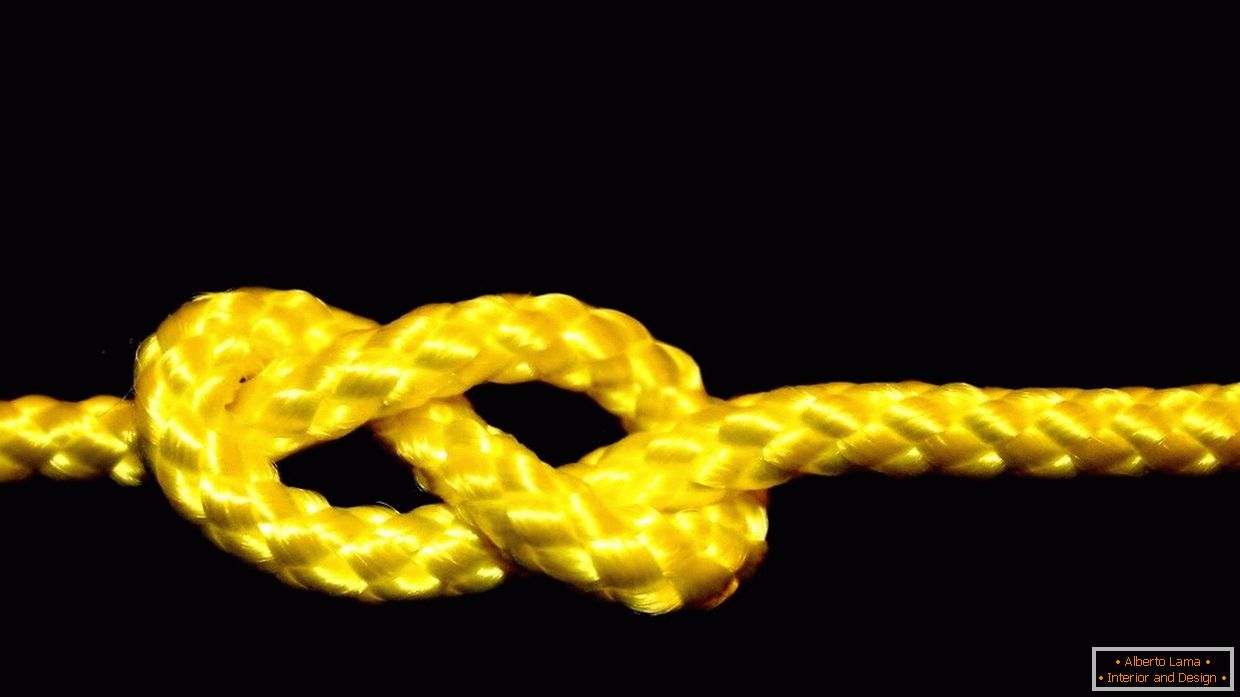
Decorative:
- "Happiness";
- Turkish;
- «Josephine»;
- "turban";
- "Fist of the monkey";
- petal;
- "Sea rug";
- a thistle;
- wreath.
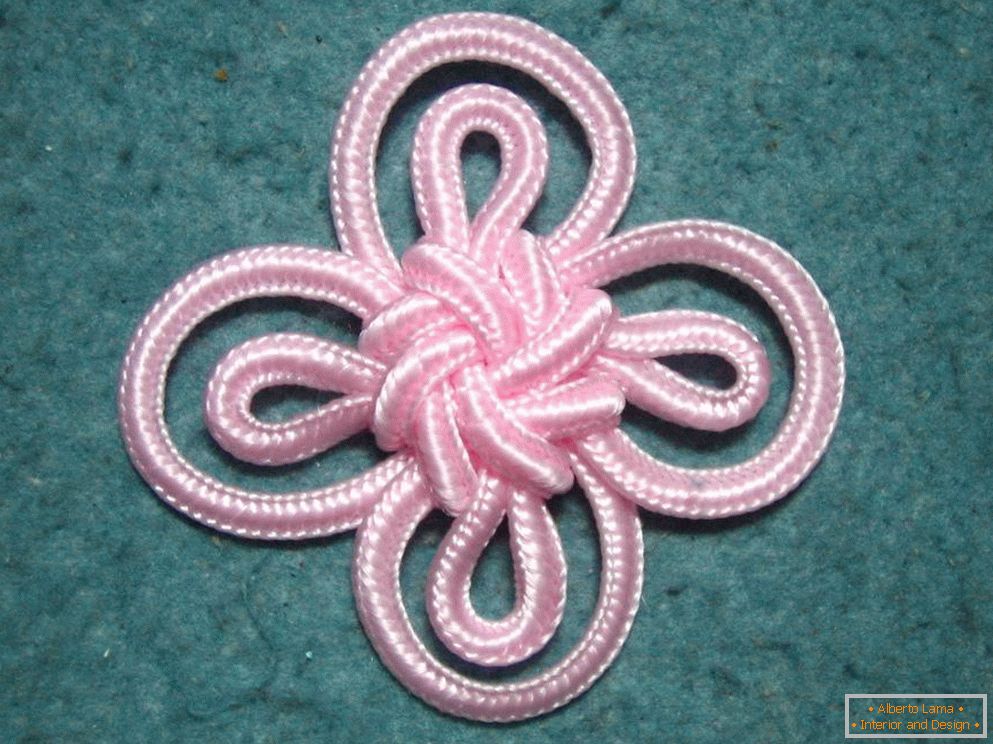
Auxiliary (for finishing the ends of threads):
- «Kapucin»;
- "earring".

Try to tie different nodules better by browsing master classes or pictures.
Variety of schemes of weaving
Experienced masters recommend starting the weaving with "square" knots consisting of left and right flat. To do this, take four threads - the first and fourth become workers, the second and third - the main ones. The first is passed under the main ones, the fourth is placed under the first one, but above the main ones, pass its tip into the first loop. Of these knots, separate strips as well as whole grids are woven.

Vertical and horizontal reps nodes are also often used. The auxiliary cord makes two turns upwards around the base, passes into the resulting loop, is tightened. The totality of such nodes is called the breed, which can also be made diagonal. In the vast majority of weaving schemes, there are rep and square knots.
To decorate the product, in the process of weaving on threads, put on wooden, plastic beads, pearls, pebbles, coins with holes.

Modern ideas of macrame in the interior
With the help of grids made in the technique of macrame, zoning space studio apartments, separating the dining area from the kitchen, allocate a living room or workplace. Mesh stretches between the slats from floor to ceiling or from the back of the sofa to the special cornices. In the arches, doorways, "crumbling" curtains are made, the head of the bed in the bedroom is also framed with a woven pattern. Very bright wicker products for children's rooms are very popular - for example, cushions in the crib, suspension over it. There you can interweave colored beads of different size and shape, so that the baby develops small motor skills, feeling them.
Read also: Wood in the interior - 50 decor ideas 
If the house has enough space, you can weave, hang a hammock. To do this, of a double flat knots, located "chess", weave a grid with cells, the size of not more than four to seven centimeters. He is fastened with strong carbines on special staples in the wall, in the garden on a special rack, between two trees.
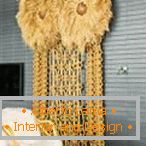

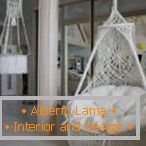
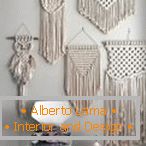
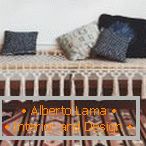
Wall panel
During the Soviet era, many apartments decorated a large or small panel in the form of an owl. It symbolized wisdom, prosperity in the house. The basis here is a wooden lacquered stick or a metal ring. The obligatory attribute of such a panel is two large eyes, usually of wooden beads or colored buttons, symbolic wings on the sides, a wooden perch on which the owl is supposed to be sitting. The eyes are fringed in all directions, the beak is also made of a bead or is padded in the form of a pea of flat knots, you can make and paws. Plumage on the abdomen of the bird is also trickled from "peas", delicate, from diagonal breeds. At the bottom of the structure is often a pocket for all sorts of little things, and even lower - a long brush, which is decorated with small beads.

For an average size of a ham it will take 50-60 meters of twine. You can also make three identical owls of different colors by placing them in a row on one perch.

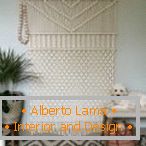
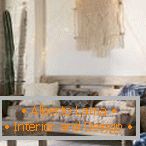

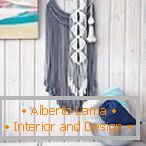
Curtains, curtains
Depending on the stylistic design of the interior, the basis for curtains is a metal cornice with shiny rings, slightly curved wooden snag. "Summer" curtains decorate the flowers and leaves, "winter" - snowmen and snowflakes. Window draperies with a gradient color transition and lush brushes will create a decoration style of "Boho". You can also make a fairly tough curtain from the horizontal breeds, and on top to sew decorative knots, such as "tree of life" or "Turkish", while decorating with a series of knots "fist of a monkey".

In the bedroom of thin light threads weave a canopy over the bed and a gaze for the dressing table. For the kitchen, a great solution will be curtains made of new, modern, easily washable materials.
The main advantages of macrame curtains:
- do not collect dust;
- almost do not get dirty;
- do not lose form;
- A great idea for zoning space;
- easy to make by hand;
- Do not deprive the room of air.
From the shortcomings it is noted only that small children, pets are very interested in "hangings" on the curtains, and cats, decorative rats, parrots are able to get very confused and cut them off.

Floor Mats
Floor Mats делаются круглыми, прямоугольными, реже – асимметричными, сложной формы. Небольшой овальный половик получится с использованием узла «морской коврик». Используя довольно толстый, длинный шнур легко создать коврик любого размера. Если взять длинные цветные ленты или просто нарезать старый трикотаж на полоски шириной пять-десять сантиметров, репсовыми узлами можно сплести ковер любого размера для гостиной или спальни. А нарезав на такие же полоски полиэтиленовые пакеты, плетут водостойкий предмет интерьера для ванной или прихожей.
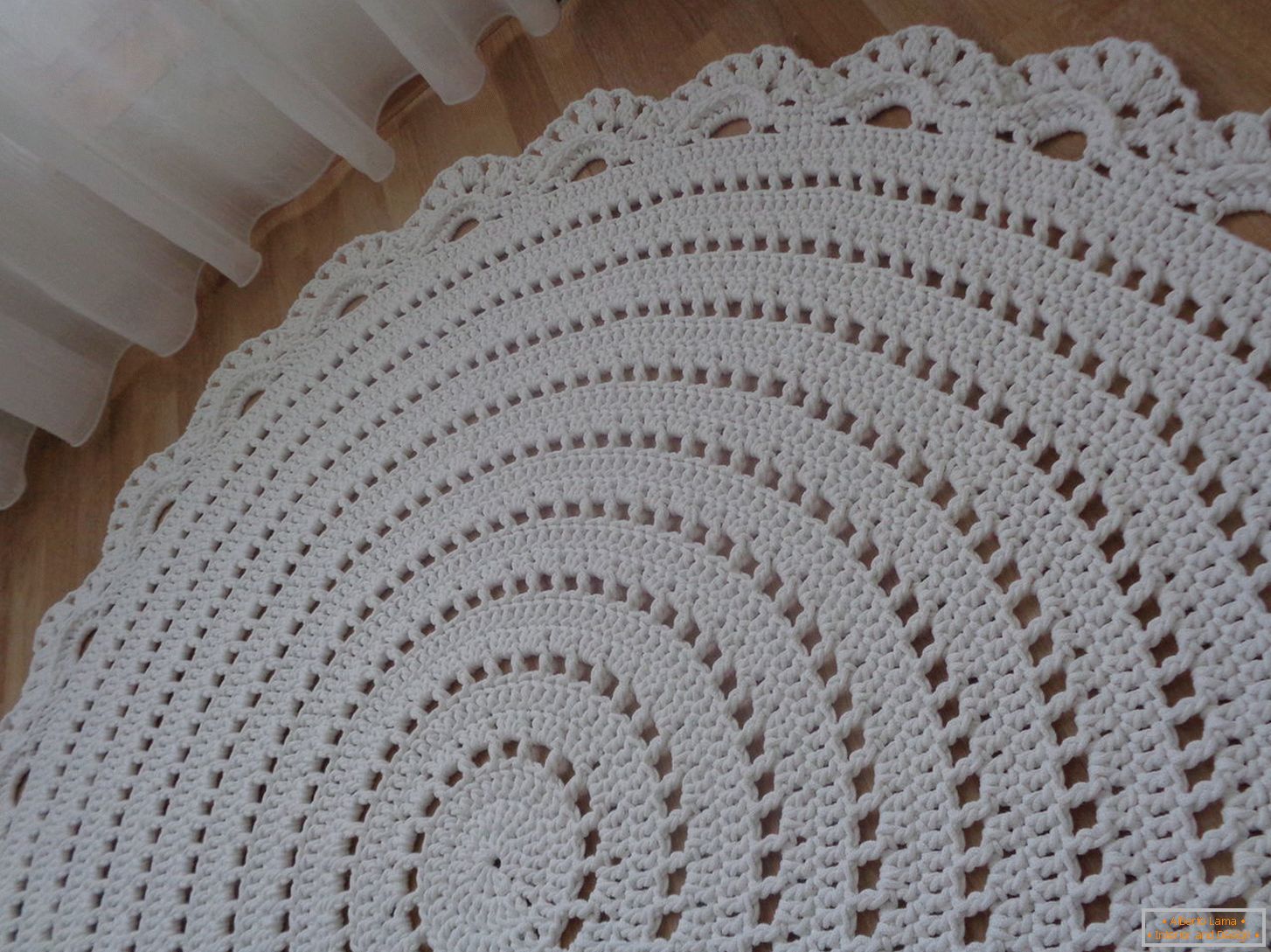
A round rug is padded on a regular gymnastic hoop - ropes of the necessary thickness are stretched as a basis for it. Knots are used any - rep, flat, frivolite, etc. After the end of work, the product is cut from the hoop, the warp threads are fixed, the edges are decorated with brushes, fringe.
See also: Imitation of the window in the interior +30 photo 
Decor items, accessories
The interior looks original, in which some places are separated by an openwork screen. It does not provide full privacy, but it originally zoned the premises. To make a full screen, a wooden frame with holes is bought or made independently, in which ropes, strings, cords are passed. "Filling" of the screen is done tight or laced. When the work is finished, the threads are neatly tied down below with decorative knots.
Shelves from macrame have a wooden or metal base, suspended from the wall, the ceiling, the bar. If desired, swings, a pendant chair, a "hanging" table or a baby cradle are made of strong ropes. To produce them is better from strong natural materials with a stable coloration.
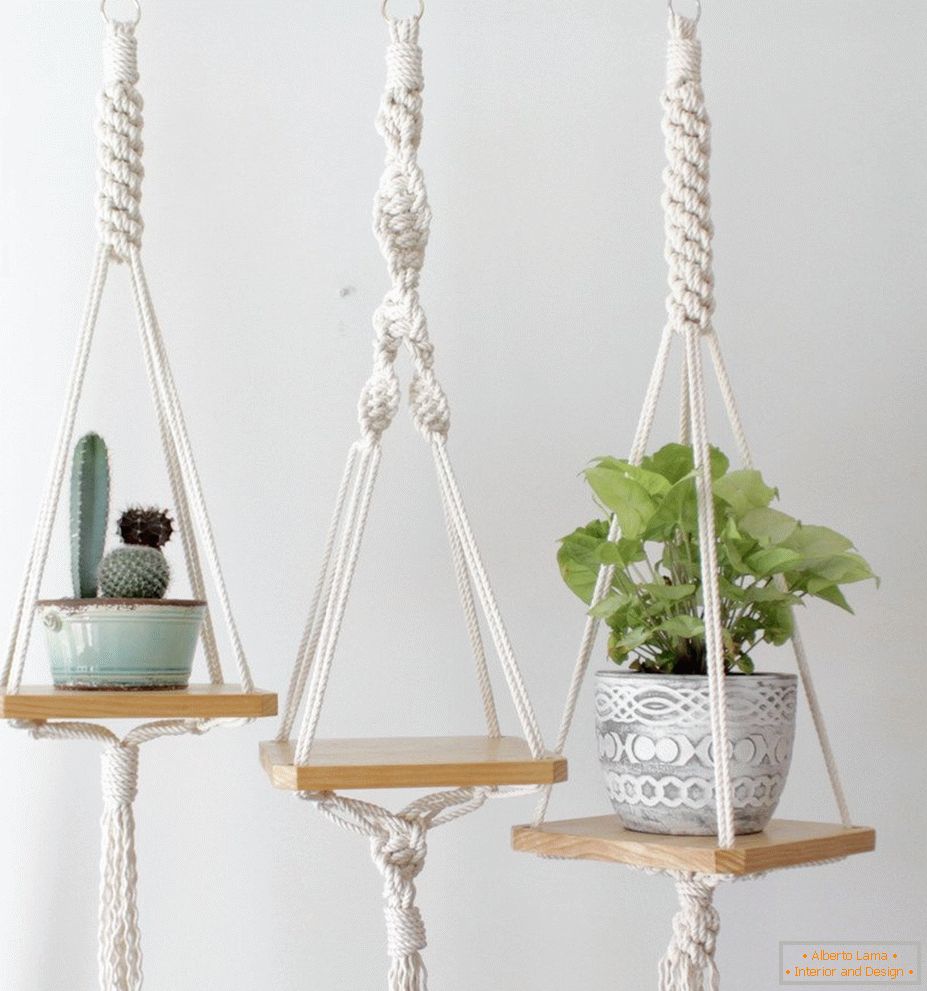
Wicker stands under the hot for the kitchen or living room, whole tablecloths, also make it simple. For this purpose, the width, length of the countertop is measured, the product is padded at least 20-30 cm more on each side. Edges are decorated with brushes or decorative knots. Original pillowcases and cushions on the pillows are organically looked, especially in retro interiors - for example, in the stylized "grandma's" bedroom in a village house of the middle of the last century.
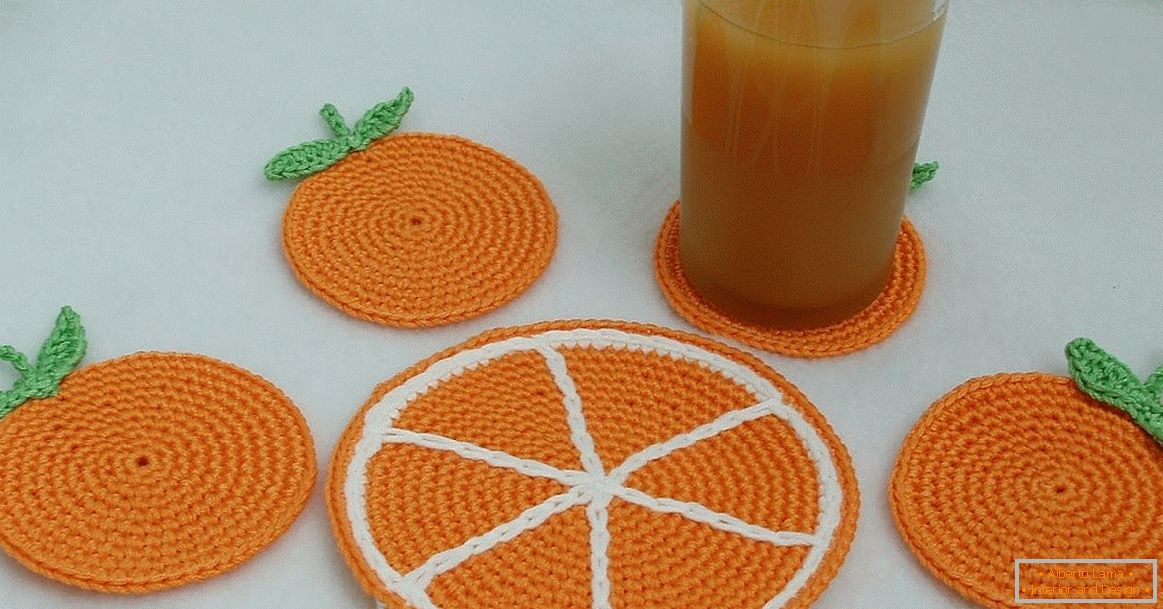
For weaving armchairs, chairs, frame benches, take an old strong foundation or "cobble" yourself. Cords, ropes, are required durable - able to withstand the weight of an adult. They should not stretch, and the weaving is made as tight as possible - otherwise the structure will quickly deform, lose shape, and begin to "sag".

Lampshades from macrame are quite popular. They are decorated with floor lamps, sconces, ceiling lamps, table lamps, children's nightlights. The main thing here is fire safety. In no case should threads touch heated parts. The construction is attached to a wire frame or an old base. To make this product, you need 100-150 meters of rope, depending on the chosen pattern.
But the most common product, performed in the technique of macrame - is flower pots for flowers. It is hung above a window or on a wall, the base is a sturdy hook, a special holder, a metal or wooden ring. Kashpo can be part of a wall panel, have a wooden base, where a pot with a flower is put or a nest is woven directly into a pot. As a pattern, straight flat knots are used most often, and the upper part can consist of only left or just right, forming a beautiful spiral. Instead of a pot with a flower, sometimes a beautiful glass jar, a vase, a decanter, etc.,

To the numerous wires from household appliances are not too conspicuous, they are also braided with colored thread or twine.
Conclusion
Handmade has become very popular in recent years, and it is relatively easy to weave laces, ropes, and threads - even a beginner will cope with most patterns. The original products made by own hands, will make the house cozy, long time pleasing an eye of owners, their visitors. A lot of wonderful ideas in the field of macrame appear in the world daily, most of them are easy to find in the "World Wide Web", special literature.

